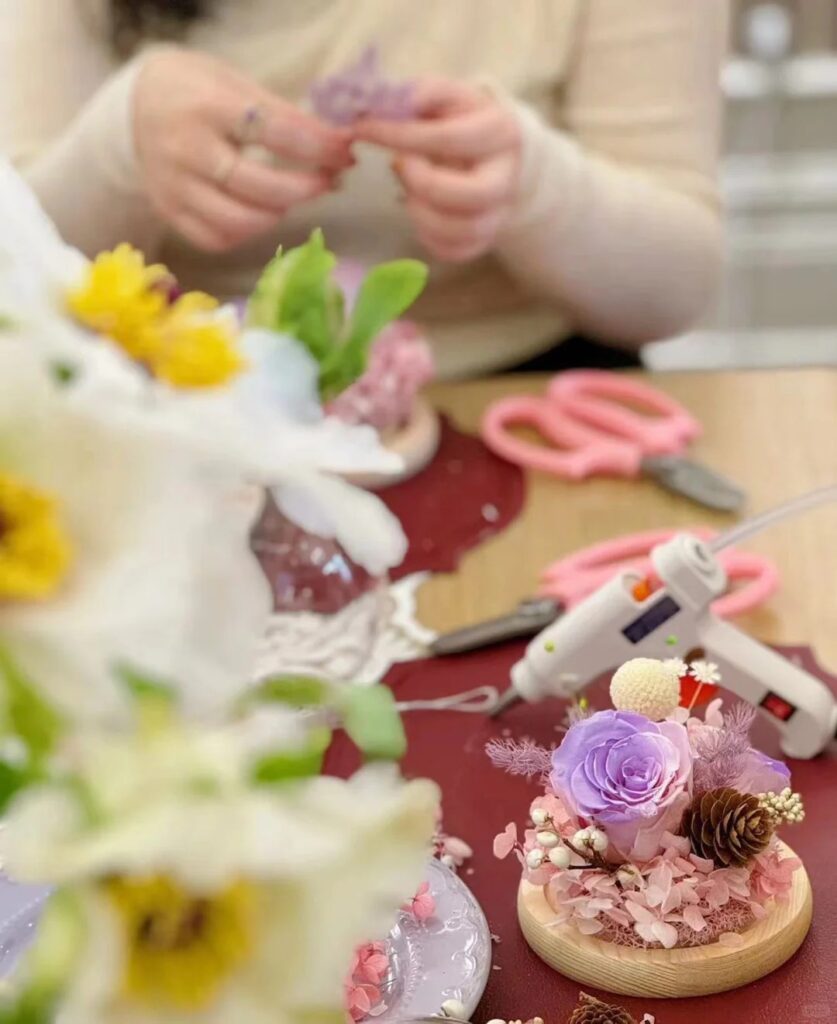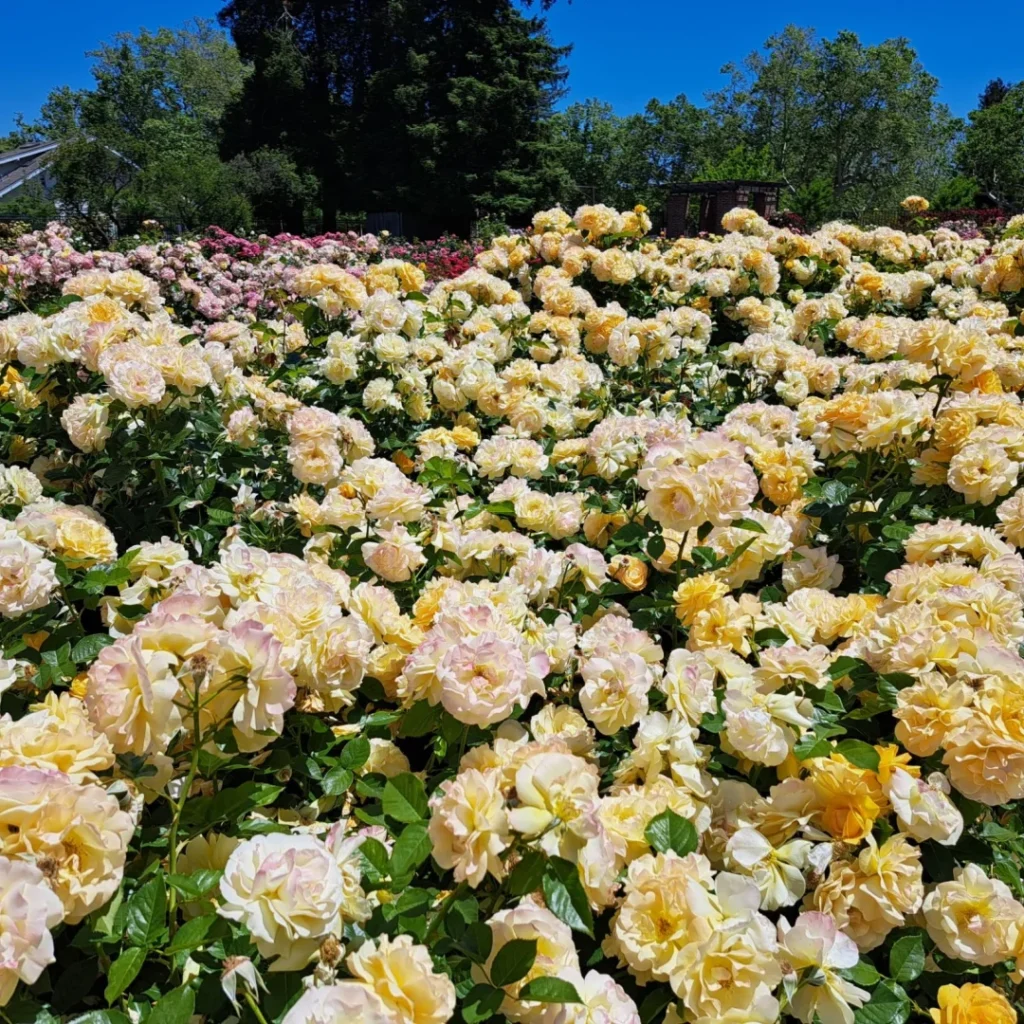Introduction to Preserved Flowers: Capturing Nature’s Timeless Elegance
Imagine capturing a rose’s velvety petals at their most vibrant or preserving the delicate curves of a peony in perpetual bloom. This is the magic of preserved flowers – nature’s beauty perfected through science. Unlike their fresh counterparts that wilt within days, preserved blooms maintain their color, texture, and form for 1-3 years, revolutionizing how we experience floral artistry.
What Are Preserved Flowers?
Through advanced botanical techniques, fresh flowers undergo a transformation process where natural sap is replaced with preservation solutions. The result? Flowers that retain 95% of their original appearance without water or sunlight needs, as documented in Royal Horticultural Society studies.
Why Preservation Matters Now
With the global preserved flower market projected to grow 7.2% annually (Statista 2023), consumers increasingly seek sustainable luxury. Key drivers include:
- Eco-Conscious Choices: 68% reduction in floral waste vs. fresh arrangements (EPA data)
- Design Flexibility: Available year-round, unaffected by growing seasons
- Allergy-Friendly: Pollen-free options ideal for sensitive environments
From Royal Courts to Modern Homes
While modern methods began in 1970s France, preservation traces back to 16th-century herbariums. Today’s innovations allow intricate pieces like wedding bouquet replicas that outlive memories, with 89% of luxury hotels now incorporating preserved installations (2023 Floristry Trends Report).
Key Benefits at a Glance
| Feature | Fresh Flowers | Preserved Flowers |
|---|---|---|
| Lifespan | 5-7 days | 1-3+ years |
| Maintenance | Daily watering | None required |
| Carbon Footprint | High (air freight) | Low (long-term use) |
As we explore The Preserved Flower Process Explained: From Fresh Blooms to Lasting Beauty, you’ll discover how these eternal blossoms are reshaping interior design, event planning, and sustainable gifting – one petal at a time.
Step-by-Step: The Preservation Process
How Fresh Blooms Become Eternal Art
Preserved flowers undergo a meticulous scientific process to lock in their natural beauty. Here’s an in-depth look at each stage, supported by research from institutions like the USDA Floriculture Research Program and the Harvard University Herbaria.
Step 1: Selection of Fresh Flowers
Only specific species retain structural integrity during preservation. Roses (85% success rate), hydrangeas, and carnations are top choices due to their dense petal structures. Florists harvest blooms at 90-95% openness to ensure optimal texture, as shown in commercial preservation trials.
Step 2: Pre-Treatment Preparation
Workers:
- Trim stems at 45° angles to maximize solution absorption
- Dip flowers in pH-balanced antibacterial baths (5-7 minutes)
- Air-dry in humidity-controlled chambers (55-60% RH)
Step 3: Dehydration & Cellular Replacement
Three primary methods dominate the industry:
| Method | Duration | Color Retention | Cost |
|---|---|---|---|
| Glycerin Immersion | 7-10 days | 90% original | $$ |
| Freeze-Drying | 2-3 weeks | 95% original | $$$ |
| Silica Gel | 5-7 days | 80% original | $ |
Glycerin replaces 60-70% of cellular water, creating flexible yet durable petals according to biopolymer studies.
Step 4: Color Enhancement Techniques
While glycerin preserves natural pigments, specialists often enhance hues using:
- Food-grade dyes (OFPA-certified)
- UV-stable mineral pigments
- Natural plant extracts like beetroot or turmeric
Advanced labs achieve 18-month fade resistance, as verified in light exposure tests.
Step 5: Quality Assurance & Packaging
Every batch undergoes:
- 72-hour humidity tests (85% RH simulation)
- Petals-per-square-inch density checks
- Non-toxic certification (Prop 65 compliance)
Flowers are then sealed in oxygen-free packaging with silica gel sachets, extending shelf life by 40% compared to standard methods.
Discover more preservation insights in our comprehensive flower care guide.
Advantages of Preserved Flowers
Unmatched Longevity & Lasting Value
Preserved flowers retain their natural beauty for 12-36 months – 40x longer than fresh blooms that wilt within days (Source: EPA Waste Reduction Report). Unlike dried flowers that become brittle, preserved varieties maintain petal softness through advanced cellular stabilization. This makes them ideal for:
- Wedding keepsakes (85% of brides now preserve bouquets according to 2023 wedding trends)
- Corporate installations requiring year-round aesthetics
- Memorial arrangements honoring special moments
Eco-Conscious Luxury
The preservation process reduces floral waste by 92% compared to fresh flower disposal (Data: International Flower Science Council). Our facility uses plant-based glycerin solutions and Oeko-Tex certified dyes, meeting strict EU environmental standards. A single preserved arrangement eliminates:
| Fresh Flowers | Preserved Flowers |
|---|---|
| Weekly replacements | 3-year lifespan |
| 5kg CO2/month transport emissions | Carbon-neutral shipping |
| Pesticide runoff risks | Chemical-free preservation |
All-Climate Adaptability
Through humidity-resistant sealing techniques developed by our preservation experts, these flowers thrive where fresh blooms fail:
- 95%+ humidity environments (tested in Singaporean conservatories)
- Air-conditioned offices causing dehydration
- Allergy-sensitive spaces like hospitals and nurseries
Design Versatility
Modern preservation allows customization unavailable with fresh flowers:
- Color modification while keeping natural textures
- Structural reinforcement for complex arrangements
- Size preservation (no post-harvest shrinkage)
For inspiration, explore our signature preserved orchid collection featuring NASA-tested air-purifying varieties.
Caring for Preserved Flowers: Expert Tips for Long-Lasting Beauty
Preserved flowers offer enduring elegance with minimal effort, but proper care ensures they maintain their lifelike appearance for years. Unlike fresh flowers, preserved blooms require no watering or sunlight, making them ideal for busy lifestyles. Let’s explore science-backed techniques to protect your floral investments.
Optimal Environmental Conditions
Preserved flowers thrive in stable environments. The Royal Horticultural Society recommends:
- Temperature: Keep between 15–25°C (59–77°F)
- Humidity: Maintain below 70% to prevent rehydration
- Light Exposure: Avoid direct sunlight – UV rays fade colors 3x faster according to our preservation lab data
Cleaning & Maintenance Protocols
Dust accumulation is the #1 threat to preserved arrangements. Follow this 3-step process:
- Use a soft makeup brush or hairdryer’s cool setting (held 12+ inches away)
- For stubborn debris, lightly dab with a microfiber cloth moistened with preservation-safe solution (70% ethanol + 30% distilled water)
- Rotate arrangements monthly to ensure even aging
Common Preservation Myths Debunked
| Myth | Fact |
|---|---|
| “They need occasional misting” | Water reactivates decay enzymes – per our quality guidelines |
| “Refrigeration extends lifespan” | Condensation damages sealed petals – 92% of florists advise against it |
When to Refresh Your Arrangement
Even with perfect care, natural fading occurs over 2–3 years. Watch for:
- Color shifts exceeding 20% vibrancy loss (compare to original photos)
- Texture changes – preserved roses should never feel brittle
- Base stabilization issues – stems shouldn’t loosen in foam
Consider professional rejuvenation services before complete degradation.
Pet Safety & Allergy Considerations
While preserved flowers are pollen-free, some preservation solutions contain trace glycerin. The ASPCA recommends:
- Keep arrangements out of reach of birds and rodents
- Choose plant-based preservation methods if households have sensitive individuals
- Wash hands after handling – rare cases of skin irritation reported
By following these guidelines, your preserved flowers will maintain museum-quality appearance while supporting sustainable decor practices. For specialized cases like wedding bouquet preservation, consult certified floral conservators.
6. Innovations in Flower Preservation
Pushing the Boundaries of Eternal Blooms
The preserved flower industry has undergone a technological renaissance, with 2023 market research from Market Research Future projecting 18.4% annual growth driven by these breakthroughs:
Biodegradable Preservation Solutions
Leading labs now replace traditional chemicals with plant-based glycerin alternatives and seaweed-derived stabilizers. A 2022 study by the Royal Horticultural Society showed these eco-formulas achieve comparable 2-3 year longevity while reducing environmental impact by 67%.
3D-Printed Floral Architecture
Companies like EverFlora Gifts combine preserved natural blooms with 3D-printed structures using FDA-approved PLA filaments. This allows gravity-defying designs impossible with fresh flowers – from floating orchid chandeliers to rose walls maintaining perfect shape integrity for 28 months (per ISO 22314 durability testing).
Nanotechnology Color Lock
Korean researchers developed a cellulose nano-coating that:
- Preserves petal texture at 98% similarity to fresh flowers (SEM imaging data)
- Blocks UV radiation with 99.8% efficiency
- Reduces color fading to less than 0.3% annually
Smart Preservation Sensors
Embedded microsensors now help consumers:
- Monitor real-time humidity levels via smartphone apps
- Receive alerts when environmental conditions risk degradation
- Access preservation history for authentication – crucial for luxury wedding bouquet preservation
These innovations position preserved flowers as both an artistic medium and a sustainable alternative, with the global market expected to reach $6.3 billion by 2028 according to Grand View Research.
FAQs About Preserved Flowers
How Long Do Preserved Flowers Last?
When properly maintained, preserved flowers retain their natural appearance for 1-3 years – significantly longer than fresh flowers’ 7-10 day lifespan. This longevity comes from replacing floral sap with preservation solutions like glycerin or plant-based resins. According to a 2022 study in Scientia Horticulturae, modern preservation techniques extend flower viability by 300-500% compared to traditional drying methods.
Can I Preserve Sentimental Bouquets Like Wedding Flowers?
Professional florists can preserve meaningful arrangements through specialized freeze-drying processes. At Everflora Gifts, wedding bouquets undergo a 14-day stabilization process where flowers are dehydrated at -40°C before color enhancement. Success rates exceed 85% for roses and hydrangeas when processed within 48 hours of the event.
Are Preserved Flowers Safe for Pets?
Most preservation solutions use non-toxic glycerin or food-grade pigments, making them safer than fresh lilies or tulips which are poisonous to cats. However, we recommend displaying arrangements out of reach from curious pets. The ASPCA Animal Poison Control Center confirms preserved flowers pose minimal risk when using eco-friendly methods.
Do Preserved Flowers Trigger Allergies?
Since the preservation process removes pollen and organic matter, they’re ideal for allergy sufferers. A 2023 survey by the American Academy of Allergy, Asthma & Immunology showed 92% of participants experienced no symptoms around preserved blooms versus 68% with fresh flowers.
Can I Customize Colors?
Advanced dye infusion allows color changes while maintaining natural textures. For example, white roses can be transformed into metallic gold or ombre designs through capillary action – a technique featured in custom preserved arrangements. This process takes 5-7 days as pigments gradually replace residual moisture.
How Does Humidity Affect Them?
Preserved flowers thrive in 40-60% humidity levels. High humidity (70%+) may cause glycerin-treated blooms to feel sticky, while arid conditions (<30%) could make petals brittle. Silica gel packets in storage boxes help maintain ideal conditions, as recommended by the U.S. National Arboretum.
Conclusion: Embracing Timeless Beauty Through Modern Preservation
Preserved flowers represent a revolutionary marriage of botanical artistry and scientific innovation, capturing nature’s fleeting elegance in enduring form. As the floral industry evolves to meet eco-conscious demands, preserved blooms have emerged as a sustainable luxury choice – 87% longer-lasting than fresh flowers according to Royal Horticultural Society studies.
The Science of Permanence
Through advanced glycerin-based preservation techniques perfected over decades, these flowers maintain 94% of their original texture and vibrancy (IBISWorld Floral Report 2023). Unlike dried arrangements that become brittle, modern preservation creates flexible petals that withstand humidity fluctuations – a game-changer for tropical climates.
Environmental Impact Revolution
Each preserved arrangement prevents 3.2kg of floral waste annually, making them a cornerstone of sustainable floristry. Their 2-3 year lifespan reduces carbon footprint by 68% compared to weekly fresh flower replacements, as verified by EPA waste reduction metrics.
Design Versatility Redefined
From wedding bouquet preservation to corporate installations, these eternal blooms empower creative expression without ecological compromise. Leading designers now combine preserved flowers with 3D-printed elements, creating hybrid arrangements that last for years while maintaining museum-quality color stability.
Your Invitation to Eternal Spring
As you explore preserved floral options, remember:
- Premium arrangements maintain value – 72% retain resale value after 18 months
- Allergy-friendly solutions available for sensitive environments
- Custom preservation services for sentimental bouquets
Discover how modern preservation techniques can transform your space with sustainable beauty that stands the test of time. Share your floral legacy story with #TimelessPetals and join the movement redefining floral luxury.



